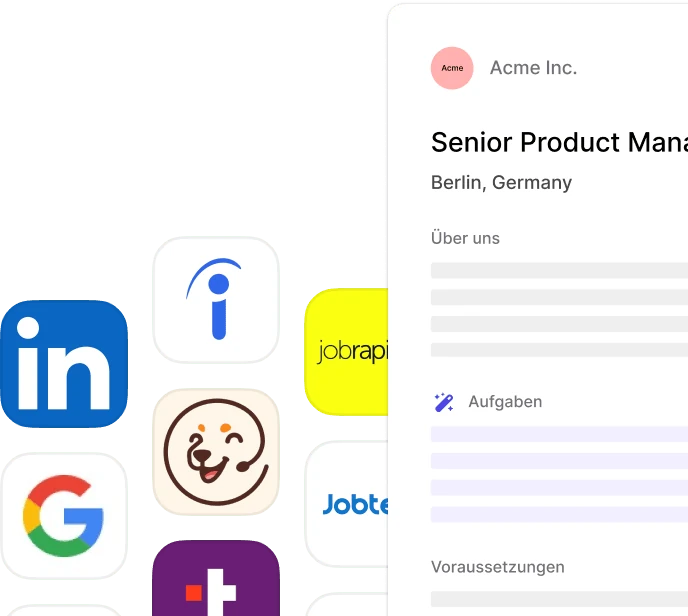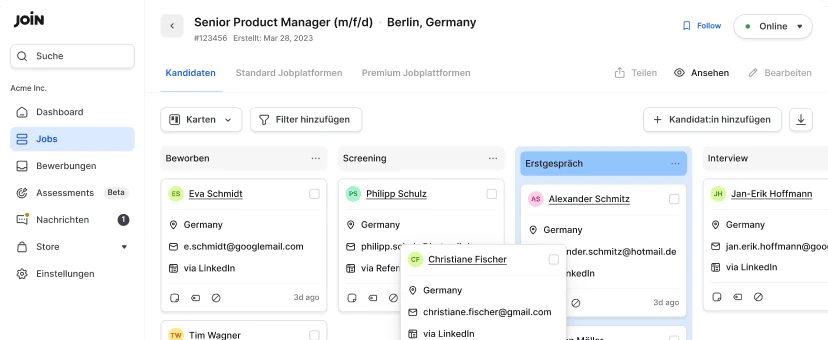Mastering talent acquisition: A deep dive into competency mapping in HRM
Competency mapping is an invaluable tool used by businesses to identify and assess the skills and competencies their employees possess. It can also be used to refine recruitment strategies, offering a structured method for screening and evaluating candidates.
Table of contents
What is competency mapping?
Competency mapping is a popular human resources strategy organisations use to evaluate potential candidates and existing employees alike. More specifically, it identifies the qualities most essential for someone to be effective in their role. The competency mapping process is a fairly involved one, but it’s necessary for building a clear picture of what’s required from employees.
Each role is meticulously analysed so that all the necessary skills, abilities, expertise, and behaviours required can be identified. While behaviours can’t be measured in the same way as these, competency mapping sidesteps the issue by looking at behavioural indicators instead.
A proficiency level is also assigned to each skill to determine just how capable someone is. This is ascertained through a series of practical tests and interview questions. For simplicity, a sliding scale is often used to measure proficiency levels, ranging from absolute beginner to expert.
Competency mapping is key to a successful recruitment strategy. For HR teams and hiring managers, it’s a useful tool for ensuring the right candidates are matched to the right jobs. For new hires, it provides a clear career roadmap and outlines performance expectations from the off.
Need help sourcing and attracting candidates?
JOIN’s free recruitment software solution helps the HR departments of companies of all sizes and industries — as well as recruitment agencies — attract and hire great talent fast and efficiently.
Create a free account in a few clicks and directly multipost your job ads to 15+ free job boards.
Key benefits of competency mapping in HRM
Using competency mapping in talent acquisition can streamline the candidate selection process considerably. While a skills matrix can be useful in identifying and evaluating skills and proficiency levels, competency mapping involves a much broader framework.
By assessing behaviour attributes as well as skills-based ones, it’s far easier to find high-quality candidates who align with a company’s vision and values.
It also means there’s less of a learning curve for new hires, reducing the need for resource-intensive onboarding. Because competency mapping allows you to be upfront about expectations, it can also help with employee retention and tackle high turnover rates. It can even prove effective at reducing the time to hire.
A competency-based approach to appraisals also helps with succession planning. As competency mapping frameworks factor in a gamut of behaviour attributes, employees with key leadership abilities can be identified early.
Skills and competencies can then be developed, ensuring promising candidates are primed for promotion.
How the competency mapping process can be applied to HRM
Competency mapping can help HR teams overcome a host of recruitment challenges, from time-to-hire constraints to ensuring quality candidates are matched with urgent vacancies.
While developing a framework is fairly straightforward, you’ll want to follow these five competency mapping steps for successful implementation:
1. Perform a job analysis
Start by selecting which roles to concentrate on. If conducting a job analysis of every role isn’t feasible, identify which roles are most critical to organisational success. You can now carry out a job analysis for each of these roles. Questionnaires, interviews, and past appraisals can all be useful during this stage.
2. Assign core competencies to each role
Armed with job analysis data, you’re now ready to identify which competencies are most relevant to each role. Make sure you’re covering the key skills, knowledge, and behavioural attributes required for a position.
3. Establish proficiency levels
You’ll need a scale to measure competency levels effectively. At a bare minimum, you’ll need a scale that covers three proficiency levels. However, for best results, you should aim to include five. Now you’ll need to define what skills, knowledge, experience, and behaviours are required for each level of proficiency.
4. Gather feedback and further input
Now you’ll need to validate the competencies you’ve identified. Draft in managers and other employees to help with this step. Some outside opinions can also prove beneficial. Think about reaching out to third-party experts to ensure your process is in line with industry standards.
5. Finalising a framework and integration into HR
Once you’ve received feedback, you can decide on a competency framework. This framework outlines an ideal competency profile for each role. This framework can then be used to improve various HR processes. Competencies can be used to create more relevant job descriptions and refine pre-employment testing, increasing the odds of landing the most desirable candidates.

Common competency mapping frameworks
There’s no one-size-fits-all approach when it comes to competency mapping. While some organisations choose to create their own competency mapping models from scratch, this isn’t always an option. Fortunately, there are plenty of established frameworks you can turn to help with your recruitment and retention goals.
CliftonStrengths
This competency mapping model is particularly exhaustive, covering 177 different competencies. However, it’s fairly simple to implement. Individuals are given two options for each competency, picking the one they feel applies best to them. Sometimes referred to as StrengthsFinder, this competency mapping example can help organisations better understand an individual’s talents, assigning them to one of 34 themes.
It’s commonly used as a development tool for existing employees, but it can be deployed during recruitment as well. Admittedly, it does focus largely on a potential hire’s strengths, but it does provide a broad picture of someone’s skills and behavioural traits as well.
Lominger competency model
This framework focuses on 67 different competencies. These include everything from career goals and creativity to business acumen and approachability in the workplace. Unsurprisingly, this competency mapping model is most valuable for finding candidates to fill leadership roles.
Unlike many other frameworks, there’s some room for interpretation with the Lominger model. There aren’t really any right or wrong answers here. As with other models, this framework can be used to evaluate expertise and skills-based competencies. More importantly, it allows hiring managers and recruiters to select candidates who best fit an organisation’s core vision and values.
SHRM HR competency model
Developed with HR professionals in mind, this competency mapping framework is an effective talent acquisition tool. With this model, each competency relevant to a role is identified and clearly defined. More baseline abilities, key skills, and behaviours are also summarised. Proficiency levels for all competencies are also required.
Although meticulous, this model is a practical approach for sourcing new hires for highly-skilled roles. However, its scope goes beyond the recruitment stage. In fact, this framework can be deployed throughout the entire career lifecycle of HR professionals.
How to overcome common competency mapping obstacles
Competency mapping brings many benefits, but successfully implementing a framework isn’t always easy. Below, we explore some of the most common pitfalls you might encounter, along with ways to sidestep them.
Misaligned competency maps
Over time, competency maps can become outdated. To avoid misalignment with company goals, make sure mapping is an ongoing process.
Competencies aren’t clearly defined
Using vague terms and failing to clearly define expectations can hinder your talent acquisition efforts. To counter this, keep definitions clear with actionable examples and make sure you’re outlining all expectations.
It’s a subjective process
Bias creates complications for competency mapping. To keep things as objective as possible, bring together a broad set of people from across the business. Alongside HR professionals and managers, look to team leaders and other employees for balance.
Too much focus on performance management
Competency mapping frameworks shouldn’t be used solely to monitor and measure performance. Instead, they should be fully integrated into your wider HR processes and the entire employee lifecycle.
Outdated technology and software
Assigning competencies to roles can be a time-consuming process. To avoid it becoming a tedious one, avoid using spreadsheets during the early stages. HR software solutions with AI-driven features can help lighten the load.

Take talent acquisition to the next level with competency mapping
Tired of dealing with a tsunami of applications from unqualified candidates? Is a high turnover rate forcing you back to the recruiting drawing board? With competency mapping, you can easily identify those core skills and traits that are essential for job success.
Once competencies have been defined, you can create on-point job descriptions and screening assessments to entice the best candidates for every role.
With a talent acquisition software solution like JOIN, you can effortlessly integrate competency mapping into your hiring efforts. Build compelling job ads to attract high-quality applications and underline expectations with customised application forms and screening questions.
Dealing with a talent drought? Target passive candidates with display and social ads, or use automation so that your ads reach as many people as possible.
Frans Lelivelt
Frans is JOIN's multilingual Senior Content Manager. His main topic of interest in the recruitment space is DEI and how companies can reduce their (unconscious) biases to make the world of work a fairer, kinder place for everyone. Outside of work, he tries to do the same for animals, spending much of his spare time in the kitchen preparing plant-based feasts.


![Sourcing passive candidates in 8 unique ways [how to]](https://cdn-public-assets.join.com/2023/07/02ccd07a-passive-sourcing.jpg)